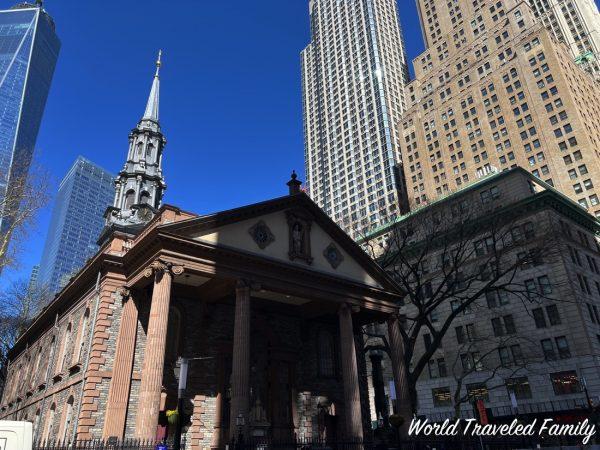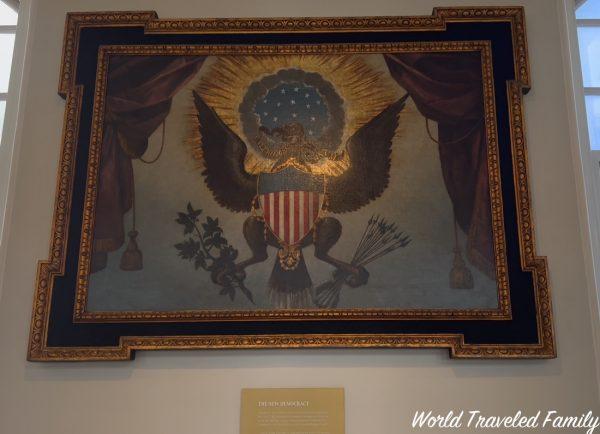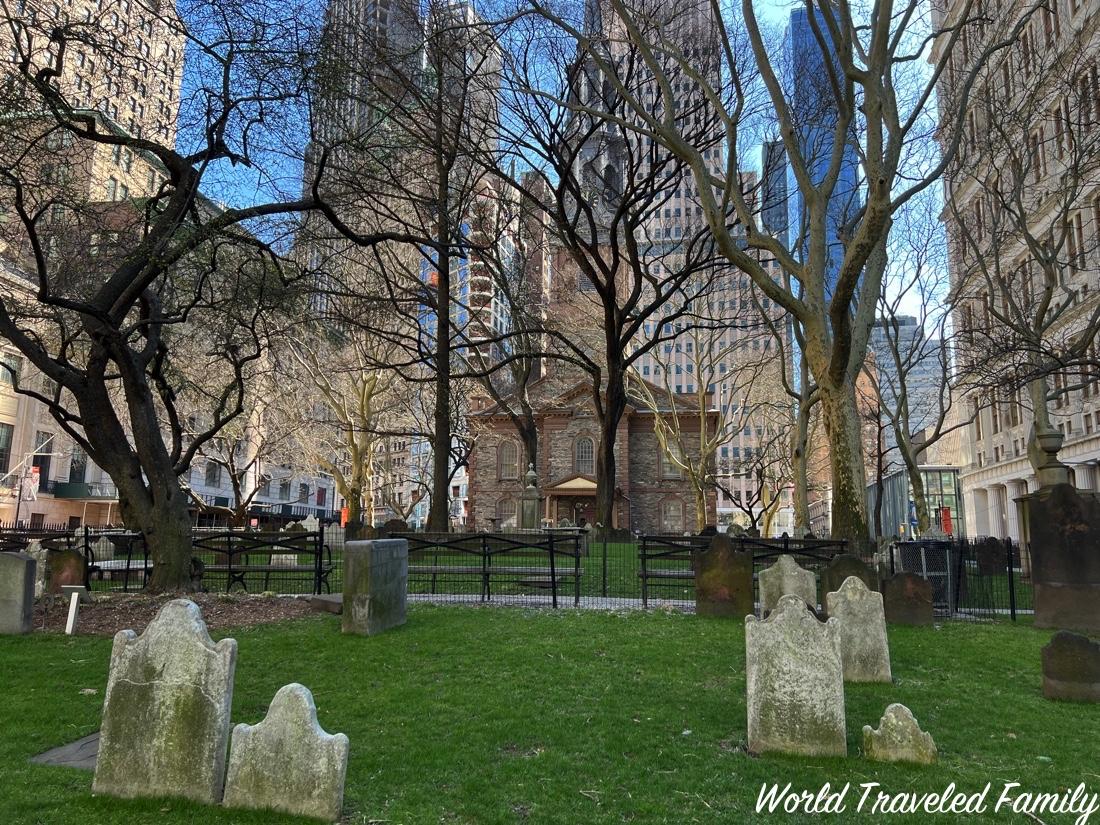If you’re planning a trip to New York City, make sure to dedicate a day to exploring Lower Manhattan and its rich historical landmarks. We started our journey by taking the subway to the World Trade Center stop, where we visited an array of significant sites all within a short walking distance. Begin at the stunning Oculus, then pay your respects at the World Trade Center Memorial. From there, it’s just a brief stroll to the historic Trinity Church and the iconic Wall Street.
Amidst the hustle and bustle of Lower Manhattan, you’ll also find St. Paul’s Chapel, a colonial-era church that stands as a symbol of New York City’s enduring history and resilience. This charming chapel offers a glimpse into the city’s past, from its days as a burgeoning colonial outpost to its current status as a vibrant modern metropolis.
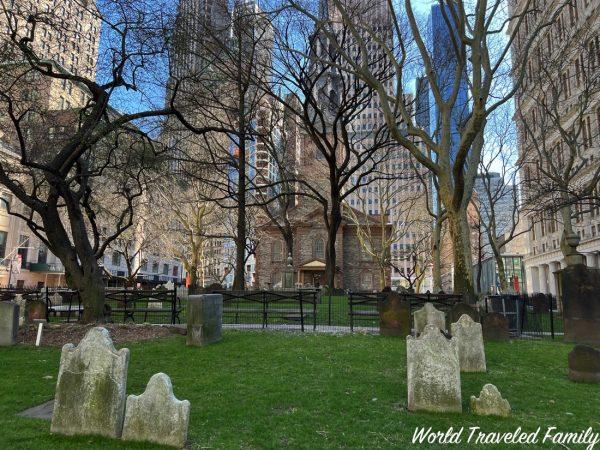
St. Paul’s Chapel, the oldest surviving church building in Manhattan, was completed in 1766. Designed by Thomas McBean, it boasts Georgian architecture that was inspired by London’s St. Martin-in-the-Fields. The church’s beautiful interior features a Palladian window, exquisite chandeliers, and a celebrated altar that has been the focal point for worshippers for over two centuries.
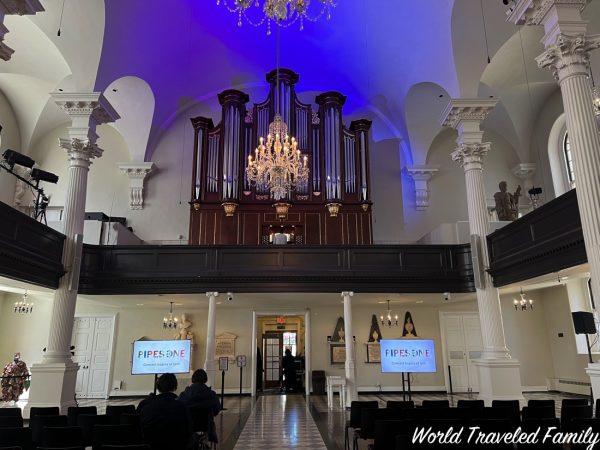
This chapel isn’t just an architectural gem; it holds tremendous historical significance. During the Revolutionary War, it served as a place of prayer and respite for American soldiers, including George Washington, who worshipped here on his Inauguration Day in 1789. Washington’s pew remains a popular attraction, drawing visitors eager to step back in time.
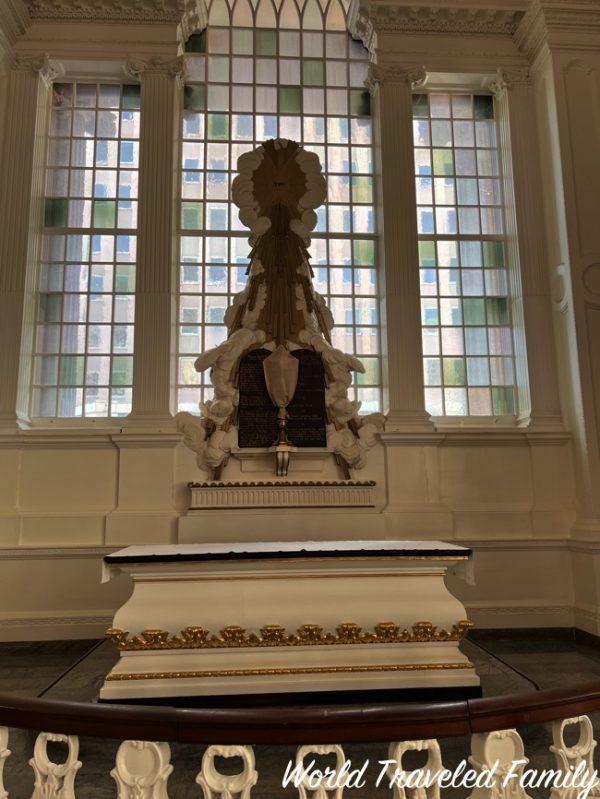
One of the most profound chapters in the chapel’s history unfolded on September 11, 2001. St. Paul’s Chapel, located just a block from the World Trade Center, miraculously escaped significant damage during the attacks. It became a refuge for rescue workers and volunteers, offering a place to rest, reflect, and find solace amidst the chaos. The chapel’s iron fence, adorned with mementos and tributes, stands as an important reminder of that fateful day.
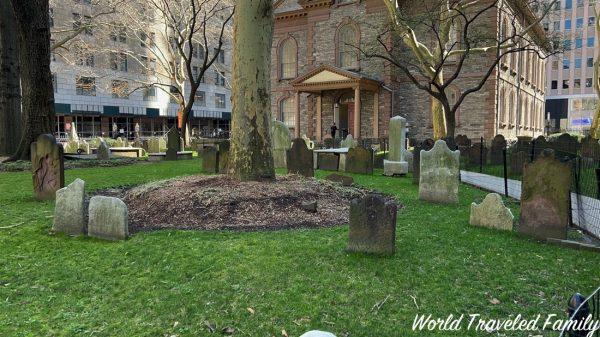
A Living Legacy
Today, St. Paul’s Chapel hosts regular worship services, concerts, and community events, maintaining its tradition as a place of inclusivity and support. The chapel’s lush churchyard, with its ancient tombstones and serene atmosphere, provides a quiet retreat amidst the hustle and bustle of the city.
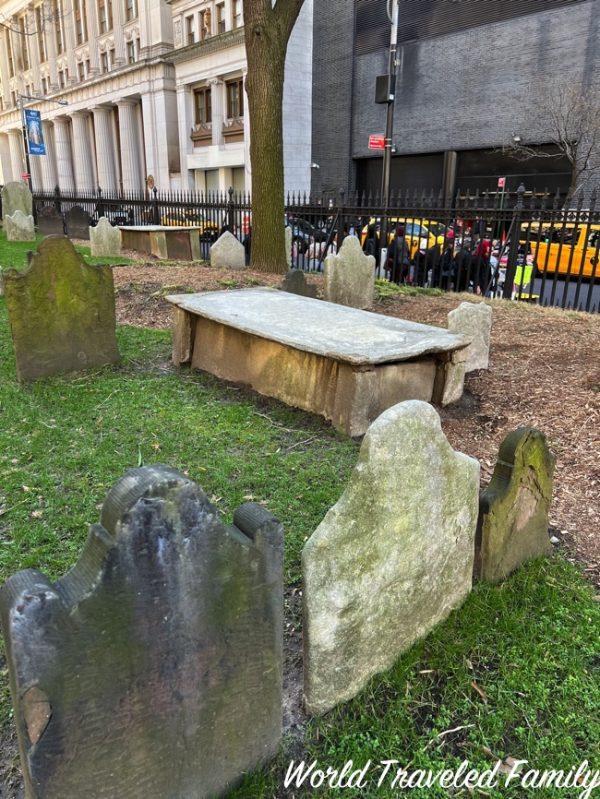
Some of the most notable churchyard burials and monuments are:
- Richard Montgomery (1738-1775)
- Monument: A large white marble tomb.
- Significance: Richard Montgomery was an American Revolutionary War hero who died during the Battle of Quebec. His monument, erected in 1818, is one of the earliest Revolutionary War memorials in the United States.
- John Bailey (1735-1823)
- Monument: An ornate tombstone.
- Significance: John Bailey was a Revolutionary War soldier and the maker of the first American flag, according to some accounts.
- George Frederick Cooke (1756-1812)
- Monument: A tall, ornate gravestone.
- Significance: George Frederick Cooke was a famous British actor known for his Shakespearean roles. His gravestone is one of the most elaborate in the churchyard.
- Thomas Addis Emmet (1764-1827)
- Monument: A simple, yet elegant tombstone.
- Significance: Thomas Addis Emmet was an Irish nationalist and lawyer who served as New York State Attorney General.
- Dr. William James MacNeven (1763-1841)
- Monument: A well-preserved gravestone.
- Significance: Dr. William James MacNeven was an Irish physician and a leading figure in the field of chemistry in the United States.
- Horatio Gates Spafford (1778-1832)
- Monument: A distinctive tombstone.
- Significance: Horatio Gates Spafford was a notable geographer and author, remembered for his contributions to early American cartography and geography.
The churchyard at St. Paul’s Chapel is a significant historical site, reflecting the rich history of New York City and the prominent individuals who played key roles in its development. The map provided by the chapel’s website can assist visitors in locating and learning more about these notable burials and monuments.
Visiting St. Paul’s Chapel
For those visiting New York City, a trip to St. Paul’s Chapel is a must. Whether you’re a history buff, an architecture enthusiast, or someone seeking a moment of peace, the chapel offers a unique and enriching experience. Located at 209 Broadway, it’s easily accessible by public transportation, making it a convenient stop on any Lower Manhattan itinerary.
